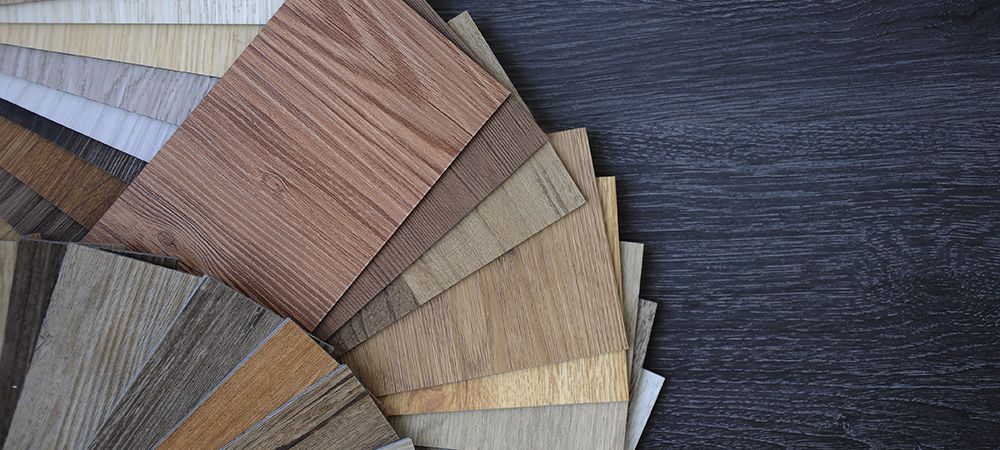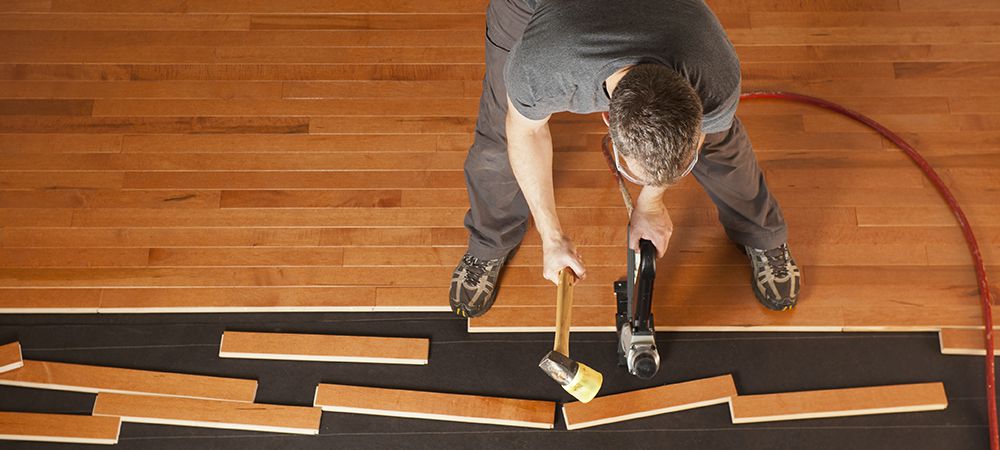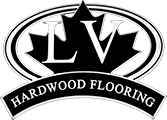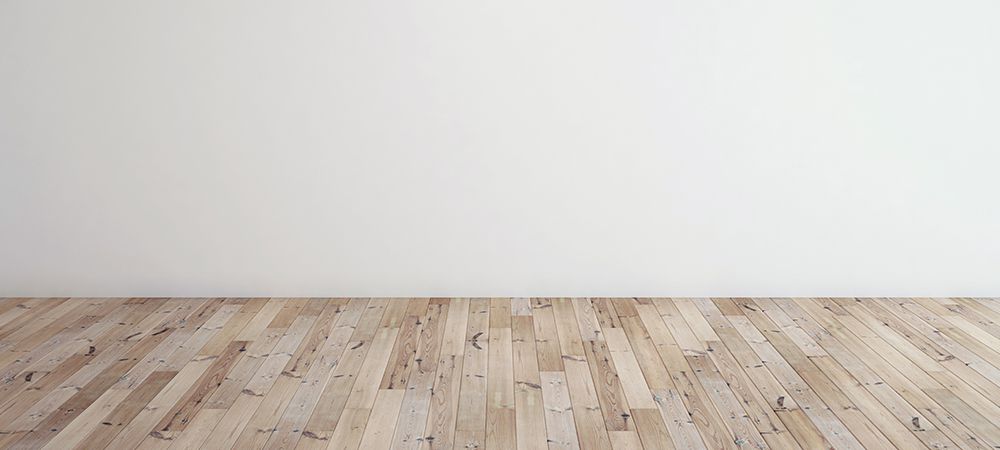Maple is not just suitable for hardwood floors; it’s excellent. Maple flooring is a popular choice of hardwood among homeowners in Canada. It lends the home beauty and grandeur. Maple also offers a contemporary and traditional blend of style to any space. This hardwood flooring material is well-known for its light-coloured tone and delicate grain.
Of all the hardwood floorings, maple offers an elegant, classic and stylish appeal while maintaining durability. Besides that, maple hardwood flooring is affordable. These characteristics are the primary driver behind the popularity of maple hardwood flooring in Canada.
With the constant buzz around maple, you may wonder if it’s actually good for hardwood floors. Just like any other hardwood floor, maple has its shortcomings. However, the advantages far outweigh the disadvantages.
If maple is the floor style that catches your eye, it’s ideal you know the factors that make it suitable for your home. Understanding the benefits and downsides of maple will allow you to make a good choice for your home.
Types of Maple Flooring
If you intend to buy maple hardwood floors in your home, it’s essential you know it has several types. You don’t want to purchase maple flooring that may end up not suiting your decor or, worse, your home.
We can classify maple flooring into two broad groups, namely: soft maple and hard maple.
Soft maple hardwood floor
As the name implies, soft maple hardwood floors are not good for flooring. However, they’re suitable for furniture veneers, pallets, wood-crafted decor items and crates.
Soft maple hardwoods include Red maple wood (Acer rebum), Bigleaf maple wood ( Acer macrophyllum), Silver maple wood (Acer saccharinum) and Boxelder (Acer negundo).
These kinds of maple hardwoods are not strong and durable. They can’t withstand the tear and wear of regular foot traffic. Therefore, they’re a terrible choice for flooring.
Hard maple hardwood floor
The hard maple wood broadly comprises Black maple wood (Acer nigrum) and Sugar maple wood (Acer saccharum). These kinds of maple hardwood floors make your flooring worth the money.
Pros of Maple Flooring
Maple is indisputably good for hardwood floors. It has the many qualities that most people search for in hardwood flooring.
Below are the pros and cons that make maple hardwood floors a unique option for contemporary homes.
Hardness and durability
Maple hardwood is one of the hardest types of wood you can find today. According to the Janka hardness scale, the floor ranks with a score of 1450. On the other hand, the popular white oak ranks 1360, while red oak is 1290. Its Janka hardness rating shows that maple is super hard, durable and less susceptible to dents than its counterparts.
Therefore, it’s not surprising that maple is often installed in public places like gymnasium floors and bowling alleys (which have a lot of foot traffic and pounding). Unfortunately, if maple hardwood floors aren’t glossed in a good polyurethane finish, they’ll scratch. Without a durable finish, the smooth and prominent grain of maple hardwood will make dents more visible.
Above all, maple is a good flooring option for hardwood floors in every household. We advise that you ensure your maple floor is installed correctly. A poorly sealed maple floor won’t offer durability and longevity.
If you consider maple the best floor for your home, you should invest in carpets and rugs for high-traffic places like the hallway. Rugs and carpets help to keep your maple floor in top condition.
Affordability
The availability of maple makes it affordable. In Canada, you can walk into the average store and find several maple hardwood flooring designs. It comes in many types, grades, sizes and thicknesses. Considering its application in commercial settings and homes, it’s surprisingly affordable.
There’s a maple floor to suit your style, preference, need and, of course, budget. Even with the price fluctuations, the maple hardwood floors are often priced lower than other hardwoods in Canada. Therefore, installing it in your home is more cost-effective than oak, ash and cherry hardwood.
There are second- and third-grade maple hardwood floors that offer solidity and moderate durability if you have to cut costs. Lesser grade maple hardwood floors have irregularities that make them a good choice for rustic decor settings. With maple, you can have the floor of your dreams without going bankrupt.
Fine and consistent grains
Unlike most woods, maple has subtle blonde grains, which means fewer imperfections. The subtle light grain patterns make maple floors suitable for large and open spaces in the home. The fine grain feature is why many people consider maple hardwood flooring for their bedrooms, living rooms and hallways.
Maple flooring offers an excellent backdrop that complements most interior designs. Its design versatility makes maple an outstanding option if you love to transform your decor often. It also gives your space a more homogeneous and cleaner appearance.
Timeless appeal
Maple hardwood floors have a unique and smooth tone, making them good for both dark and light furniture. While it’s stunning in rustic and traditional homes, it’s perfect for modern interiors that mimic bright colour patterns and minimalism.
Maple flooring is ideal for contemporary interiors like modern Scandinavian, coastal and mid-century styles. Maple also complements whitewashing designs.
Easy to clean and maintain
Unlike other hardwoods that require constant retouching and staining, you only have to sweep and mop maple regularly to maintain it. An adequately finished maple floor only requires buffing every two years. Periodic buffing will ensure the maple flooring retains its lustre.
Keep in mind that maple hardwood floors are slippery when wet. Therefore, you must place a warning sign while cleaning to prevent an accident.
Increases the quality of your interior
No one can deny that maple hardwood gives the room an impressive look. Aside from the fact that it goes with any colour, maple is good if you want to achieve an airy and light appeal with hardwood floors.
Maple flooring is dust-resistant. Its dust-resistant nature means Maple hardwood contributes to controlling airborne allergens and pollutants that pose health risks. It’s an excellent flooring choice for pet lovers.
Eco-friendly
Considering the availability and short growth period of maple in Canada, it’s an environmentally friendly flooring option. Its short growth period is in stark contrast to exotic woods, which grow slowly.
Related Article: What Flooring Is In Style 2021?
Are There Cons to Maple Hardwood Flooring?
Just like any hardwood, maple has its downsides. There’s a misconception that maple hardwood isn’t ideal for flooring in certain climates. Most people find it unattractive because it warps. However, warping occurs in every type of hardwood and most times; the wood isn’t the cause.
Maple warps when the flooring isn’t dried correctly before installation. Other times, a flawed installation process may be the problem.
Fades easily
Every wood fades over time when exposed to lighting. But since maple is a light wood, continuous exposure to direct sunlight can fade its colour. If any part of maple is directly exposed to the sun, it’ll fade fast and create an unappealing dual effect in your home. Therefore, you should buy maple hardwood floors with rugs to protect them.
Susceptible to dents and scratches
When a dent shows on the surface of maple flooring, it’s more conspicuous than other hardwood. Maple has fewer grains and light colours. Its light shade makes dents and marks highly visible.
There’s a simple solution to prevent dents and scratches on your maple hardwood floor. All you have to do is treat your maple floor with a protective sealant.
If you install maple flooring in a space with high foot traffic, regular treating is essential. The same applies if you have children or pets. Pet claws and children’s activities (playing with plastic toys) will likely leave scratches on your floor. You can also add wax rubbing polish to conceal small dents.
If you prefer a pristine and shiny-looking floor, then maple isn’t the best option. Heavy use hardly causes damage to maple hardwood, but it’ll leave deep scratches that sealants may not cover in the long run.
Sensitive to extreme humidity and heat
Maple is highly sensitive to temperature changes and extreme humidity. It often reacts terribly in areas with varying humidity levels. Maple hardwood flooring will swell and contract with fluctuations in humidity levels. The swelling causes the hardwood to warp, expand and split.
If you live in an area that experiences high summer humidity, maple isn’t a good choice for your hardwood floors. If you still intend to install maple flooring, you must ensure the room has a steady temperature. You may need a dehumidifier or humidifier to achieve that.
During the dry winter season, a humidifier will prevent your floorboards from shifting and receding. During the summer months, the dehumidifier will help you maintain the humidity level.
Hard to stain
You can stain maple flooring. Maple hardwood has tight grains that don’t absorb staining completely. Even in situations where maple has loose grains, it absorbs too much dark stain, leaving dark spots on the floor.
If you want to stain your bright-coloured maple floor, this is a con that may cost you money in the long run. Rather than staining, we recommend you buy high-grade maple hardwood floors.
Also, dye is very productive for darkening maple. Experts should perform the dyeing and staining process. To save costs, you can also choose pre-stained planks.
Boring grain pattern

Maple is a plain hardwood with subtle grain patterns. The fine grains give it a uniform look, which can be boring. If you prefer floorings with realistic patterns and exciting grains, maple isn’t the best pick.
Buying Maple Flooring: Options to Consider Maple Floor
In the search for good maple hardwood floors for your home, there are different grades of choice.
Engineered maple hardwood flooring
Engineered maple hardwood has a thinner thickness than solid maple. Its made of multiple maple veneer layers. Engineered maple is often ¼ thick.
As for the finishes, width and length, they vary with manufacturers. Engineered hardwood offers a wide variety of coloured finishes compared to solid hardwood. We don’t recommend engineered maple flooring for places where the relative humidity drops below 30%.
Solid maple hardwood flooring
Solid maple hardwood is usually made of floorboards cut from a single piece of maple wood. It’s often ¾ thick and available in larger widths and lengths than engineered maple hardwood.
Many manufacturers produce solid maple hardwood in either unfinished or prefinished states. The pre-finished hardwood planks are often treated with a sealant or paint coat.
Laminate maple hardwood flooring
Laminate maple hardwood is an ideal option if you’re working with a tight budget. It makes maple hardwood floors worth the money because it offers quality at a low price.
Laminate maple planks widths have the standard 5” measurement. But, it also varies depending on colour and style.
Maple v Oak: Which is Preferable?

Oak and maple have always been the top flooring choice among Canadians. They’re both durable, affordable, available in different forms and popular. The similarities between maps and oak may make it challenging to pick one over the other.
So if you’re torn between maple and oak hardwood floors, the information below will help you make a good decision for your home.
Pricing and brands
Generally, oak hardwood is more expensive than maple. On average, the cost of maple flooring ranges between $4 to $8 per board feet. On the other hand, expect to spend between $5 to $10 per board feet for oak.
Keep in mind that the pricing above excludes the cost of installation and materials. Considering maple is easier to install, it’s more affordable than oak flooring.
Appearance
Oak and maple do not look the same. They differ in grain and colour.
Maple
Maple is lighter and brighter than oak. It’s white and creamy with reddish-brown hues. In terms of aesthetics, maple flooring has straight graining patterns.
Oak
There are two types of oak: white oak and red oak. White oak flooring planks have a less prominent grain pattern. Instead of white, it tends to have a brownish and grayish tone. As for red oak, it has pinkish and rosy undertones with a heavy or medium grain pattern.
Oak has several interesting patterns like rings, stripes, wavy and flecks that render it more eye-catching than maple. This feature of oak makes people wonder if maple is good for hardwood floors. In addition, oak can hold stains well. If you’re conscious about your home aesthetics and decor, choose oak hardwood.
Durability
Both kinds of wood are durable. But according to the Janka hardness rating scale, maple is more hardwearing than oak.
- Hard maple hardwood: 1450
- Soft maple hardwood: 950
- Red oak hardwood: 1290
- White oak hardwood: 1360
Hard maple, red oak and white oak are very hard. These woods can withstand wear and tear. Not to mention, they’re ideal for busy areas. Meanwhile, the soft maple is hardly used for flooring but furniture. Of all the hardwood above, white oak can withstand seasonal weather changes. Hence, white oak is the most stable flooring option.
Factors to Consider When Installing Maple Flooring
Besides its durability and longevity, maple hardwood flooring is a common choice that won’t go out of style. But like every hardwood flooring, the installation process matters. So before using maple, ensure your underlayment and subfloor are in excellent shape.
It’s best to hire a professional flooring installation team for your maple hardwood floor. To maintain your maple hardwood, it’s ideal you set aside funds for periodic refinishing (every 2 to 6 years). If you’re going for engineered maple hardwood, choose flooring planks with a study wear layer.
A sturdy wear layer will extend the lifespan of your maple flooring. Above all, check if your manufacturer gives a decent warranty.
When it comes to maple flooring, you can’t go wrong. Just choose the best option that pays you. Maple has been in use for ages and will continue to be in high demand for a long time.
Related Article: How Much Does Maple Hardwood Flooring Cost In Toronto?
Bottom Line
Maple is no doubt good for hardwood floors. It adds style, value and beauty to the home. If you’re installing maple in a space that sees less foot traffic, it’s an outstanding option that’ll last for years.
For high-quality and budget-friendly flooring options, check out our collection of maple hardwood floors. Here at LV Flooring, we offer different types of maple hardwood designs to suit the decor and aesthetics of any home.
We also offer top-notch installation to ensure the longevity of your maple hardwood floor. Contact us today!


